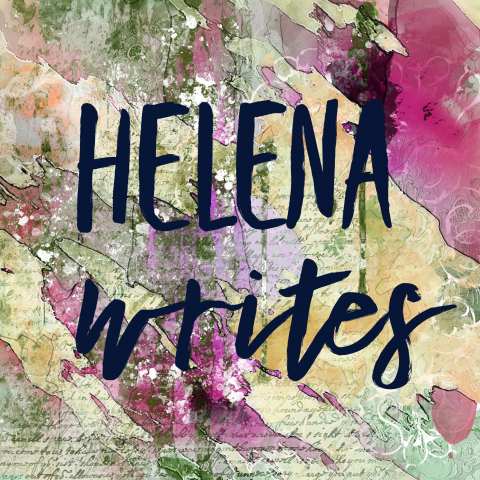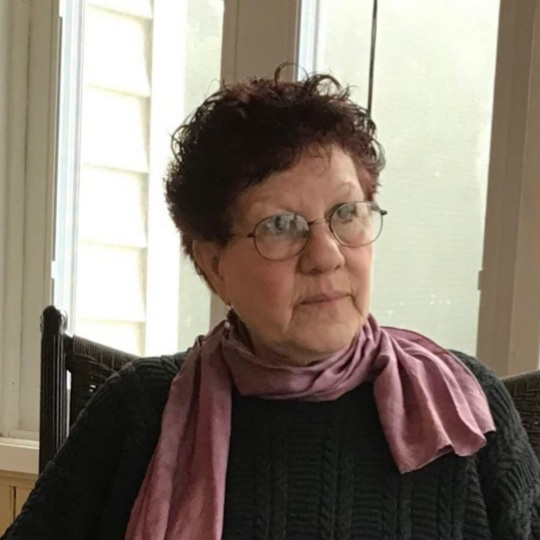
Helena Clare Pittman, one of the Center’s most dedicated teachers, has written, painted, and taught her entire life. In her monthly Helena Writes series, she shares a lifetime of wisdom, one pearl at a time.
In her tenth post, Helena ponders close noticing and how certain familiar objects can facilitate a vivid travel through time. Enjoy!
Yellow
The snow has at last melted here. Three solid days of rain, and the daffodils are bursting!
In the days before I painted flowers from my garden, and also in the days before my investigation of the use of yellow grew deep enough to dazzle me, I’d take note of the daffodils I’d brought up here, from my garden on Long Island, and how they poked through the leaves first, the garden still bedraggled and delinquent. Before the clean-up after winter’s ruination. Barren before the blooming, the greening, as St. Hildegarde put it. Hildegarde’s parallel was us, our blooming, after the dull sleep of the “ordinary.” Until the dawning of the miracle of breath itself pierces our slumbering sensibility.
In those before-days, the ones in which I did not paint my garden’s flowers, it seemed unsacred to cut them. Also, I had not yet discovered the beauty of daffodils in a painting. The many yellows in one petal that brought a painting to another depth of the passion of color. The marvelousness of that most saturated color that, unbalanced, can commit violence to a picture plane.
That changed two years ago, when my taboo had run its course and I cut a few daffodils to paint. Through them, I got lost in the revelation of yellow’s great beauty. A color teacher, I learned the principle of yellow in Goethe’s measure of light reflection, via Josef Albers. But I’d never discovered it on my own. What a glory!
And there they are now, outside my bedroom window, seeming out of place to me, as they always do, the first flowers to show themselves, poking through last year’s dry leaves amidst a garden that has not yet dragged me out to make some order. So, now I am under pressure. Daffodil pressure. I’ve got to paint them before they pass.
But today is blog day, and they will, I pray, wait until tomorrow, the morning of Easter, or Easter Monday.
Stones
Long ago, my friend Alice, who lives on an island in the Pacific Northwest, told me that she and her partner, Frank, find tools. Prehistoric. “They’re everywhere, once you tune into their presence,” she told me then, or something very like it. I was skeptical. Yet what she’d told me reverberated in my solar plexus—the way the cave paintings do—20,000, 40,000 years old.
Immersing myself in those images left there by people who lived so long ago, other human beings, took me out of “ordinary” time. Brought me somewhere nothing else ever has. I had discovered their existence as a young art student, in Art History class. But I really began an encounter with them when, one year, I was invited to teach Art History at SUNY Farmingdale, on Long Island, where I taught for many years. I had to re-read Janson’s bible of art history and stay one step ahead of my students.
I also had to suspend work on the illustrations for Counting Jennie and push ahead the deadline. Reading Janson’s took all my time. As a 16-year-old, when I first took art history classes, my brain was made of wood, it seems to me now. But that year I had to read to teach, I became immersed.
Then I addressed those paintings that were so impossibly ancient—how does one grasp 40,000 years? My gut was the star gate—the hole in space that crossed impossible distances which Arthur Clark had written of in his novel, 2001—A Space Odyssey. I lived through my imagination in the cave images for a time, and it struck me with terrific force one day that the paintings, bison, deer, bulls, aurochs, horses, hand prints—finger prints!—could only have been seen by the light of flickering torches. Well, of course! They were experienced!
We’ve found the torches, charcoal tipped. We’ve found rock oil lamps, charred, too. Fire moves. If you ponder that for five or 10 minutes, I mean sink yourself into it—be there—you’ll immediately see the images had to have moved with the fire! Aurochs, animals we don’t know now—pre-historic horses dancing in firelight. Can you imagine it? A gathering of humanity, in a cold, dank cave; maybe they huddled together. There were fire pits—we’ve found those, too. Maybe they were sweating, filling the cave with rank human scent, no sunlight reaching where they stood, or sat, or sang, or danced, or prayed. Or just watched by the light of fire.
Ritual? Entertainment? There was music in those caves. Flutes carved of bone are still unearthed in the cave floors. There had to have been drums. I have nearly heard them. Drums are natural. The heart beats.
My father showed the first talkie picture in Canada, long before he met my mother. He was a projectionist, and lived in Montreal. The images in the caves at Lascaux moved. “Your father showed the first talkie pictures in Canada,” the family story, the quote, on the lips of my mother, and later on my own.
One year, while again contemplating the cave images in a gorgeous new book, once again transported, time traveling, I leapt to a parallel between those two astonishing realities, the caves and my father, the Projectionist, with whom I went to see movies when my mother had no interest. Jazz on a Summer’s Day, Ballad of a Soldier, The Cranes are Flying, art films, foreign films with subtitles, 15 years after Montreal. Those were the common art genes my father and I shared. My mother had music. My father could draw. Time travel to the caves, and to being with my father in New York City cinema houses, side by side, watching those films. They made a deep impression on me, I think now, because my father was immersed in them, took them seriously, and I took him seriously. They fed his spirit, and they fed mine. As the cave images must have fed the spirit of the people who left them there for us to read.
During one telephone conversation with Alice, about those stone tools, she asked if I’d like to have some. She Fedexed 25 of them—$30, or something like that, to ship. She and Frank had numbered each stone and written a list on yellow legal paper that explained their uses. Axes, adzes, scrapers, game pieces. Pounders, sharpeners, arrowhead chippers.
“You have to sit them in your hand and try holding them in different ways,” Alice wrote. “A few are left-handed. They’re always ergonomic.”
The juxtaposition of that word with objects that were used 20,000 years before is, it struck me, “so Alice.” Alongside my wonder on the one hand, and skepticism on the other, stands Alice’s practical yet mystical nature. It was obvious to her that of course these things that look, at first glance, like stones, are things people made and used. She’d seen it.
I pored over that tool shipment. And I saw it, too. They did fit into my hand; I found the finger holds, saw the places they were scored and worn down. They were ergonomic.
I am still trying to write a children’s book about the caves, the firelight, and my father’s life as a projectionist in Montreal. A book that is made of time travel. Images of hands like ours, pressed, time unfathomable before us, onto the surfaces of caves in Spain and France. People dancing in flickering light. And my father and me watching light shining through speeding cellulose. The brilliance of Anita O’Day singing “Sweet Georgia Brown.” I don’t lie—much…
Art. Jazz. Constants. It began with him, my father. The awe and wonder began with him.
Daffodils
A painting I’ve been struggling with for six years needs yellows. I realized it this morning as I wrote in my journal. A jar of three daffodils, behind my already-painted line up of bottles, on the windowsill. That will solve it, finally, I hope.
I can’t write without time travel. I have to put myself some place that awes me—look around, see where I am, and get it onto the page.
Postscript
Alice was right. Since she sent me that package of treasures, I have found many other stone tools. A black stone hammerhead, lying on the asphalt of a parking lot, diagonal striations worn into it where leather strips or straw had fastened during long and heavy use. A spear head, scrapers, chippers, pounders. Cylindrical stones, rounded at both ends. Something honed so carefully into an oval worn shiny with use—a paint marker for the face? The arms and legs? I’ve found stones that have been carved—not in parallel lines that may have been random, but purposefully carved in angles. A calendar? Someone waiting?
I ponder these stones for an hour some days, in a state of deep connection, captivated rest. Lost in time travel, so akin to the state any of my writing has issued from.
Have you ever stared at a familiar object so long, you experience a kind of time travel? What part of Helena’s post most resonated with you? Share with us in the comments!
Related reading: Read the previous Helena Writes posts
Want to receive tips and inspiration like this in your inbox every Sunday morning? Join our email list community! You will receive weekly advice, a year’s worth of weekly writing prompts as a FREE download, and be eligible to participate in our monthly photo prompt contest for a chance to share an original piece of writing with our community of over 1,100 subscribers!
